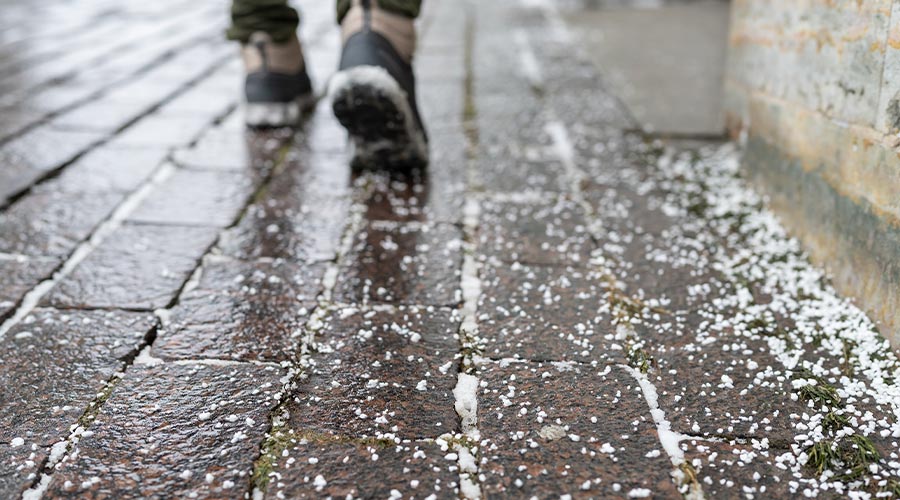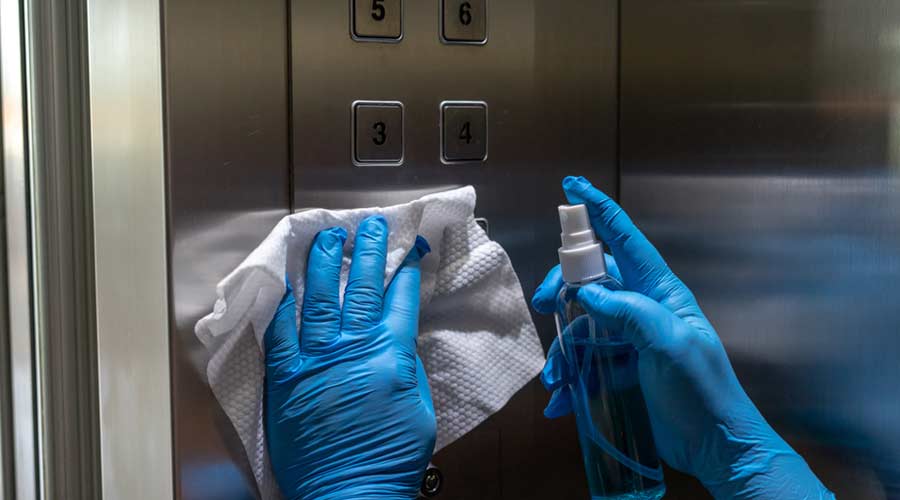
Though the heat of summer still lingers, the ice melt industry is actively preparing for the winter ahead. Distributors are securing bids, coordinating deliveries, and strategizing inventory. Because in the ice melt business, winter weather preparedness doesn't take a summer break.
“Summer is the ideal time to order snow melt products,” says Mark Arthofer, certified snow professional and president of Skyline Salt Solutions, Dubuque, Iowa. “By then, suppliers have a clear picture of national inventory levels, and you can secure your product before the panic sets in.”
Distributors (and their customers) who wait until the first snowfall will be stuck in line — or worse, left out in the cold. The salt supply can be unpredictable. Mild winters can lead to overstock, while a tough season on the East Coast can drain national reserves. For this reason, jan/san distributors should think about winter as they enjoy barbecues and other remaining summer fun. It’s up to them to make sure their customers are ready for the first flakes.
“They should have enough snow melt on hand to handle at least three to four snowfalls, just to be sure they are covered,” Arthofer says.
Martin Tirado, CEO and executive director of The Snow and Ice Management Association (SIMA), Mequon, Wisconsin, recommends reviewing five years of weather history in a particular region to accurately calculate ice melt needs.
“A private monitoring company can get very specific — down to even just a few zip codes, the time of day, and how much snowfall was recorded,” Tirado says. “This helps specify the right product for the winter ahead.”
Joel Craddock, CEO of Doc’s Facilities Consulting Inc., Gates, New York, adds that jan/san distributors need to forecast sales well in advance. They should examine whether they have new customers, what was sold in the past, and predictions for the coming winter. Beyond that, it’s a distributor’s role to make sure clients are prepared when snow warnings come their way.
“When we see there is going to be an ice or snow event in our area, we send out a mass email to our clients reminding them to check their salt supplies,” Arthofer says. “We try to be proactive and get them to think ahead.”
Know the Options
Rock salt alone no longer does the job, say experts. Today’s consumers demand treated salts, liquid brines, and enhanced blends. Distributors that offer an array of options can equip clients with the right tools for the job, whether that’s a magnesium chloride blend for longevity, calcium chloride for fast action, or acetates for sensitive areas like airport runways and hospital helipads.
To help clients choose wisely, Arthofer recommends asking the right questions:
- Are they handling residential, commercial, or institutional properties?
- What level of service does their clients expect — bare pavement or just safe conditions?
- What equipment are they using?
- What cutting edges are they using?
- Are they using sectional type plows?
- Do they have the gear to pre-treat surfaces or apply liquids effectively?
“Your customers primary goal is to get back to bare pavement status as quickly, cheaply, efficiently, and environmentally friendly as possible to keep people safe,” he says.
Experts also suggest providing customers with a toolkit fitted out for their specific needs. They should carry rock salt (sodium chloride) for warmer storms and budget-conscious jobs. Treated salt should be kept for lower temperatures. Acetates are a non-chloride option that can be useful on sensitive surfaces like airport runways. They’re also less harmful to plants and animals, according to Craddock. Distributors must also specify the right product for the correct job.
SIMA studies have found that pretreating raises the pavement temperature enough that ice doesn’t settle on the pavement. Brine sticks to the surface, doesn’t run off as much, and can improve product effectiveness by 30 percent, Tirado says. Enhanced brines with additives like magnesium chloride or calcium chloride are nice to have because of their fast activation.
In colder regions like the Midwest, Craddock recommends steering clients toward a product rated for extreme cold. But in places like western New York, where those frigid extremes may only last a month, it is possible to get by with less aggressive options.
Proper Techniques to Using Ice Melt

 Celebrating BSCAI's 60th Anniversary eBook
Celebrating BSCAI's 60th Anniversary eBook The Down and Dirty on Cleaning in Virus Season
The Down and Dirty on Cleaning in Virus Season How Surfactant Use is Expanding in Commercial Cleaning
How Surfactant Use is Expanding in Commercial Cleaning